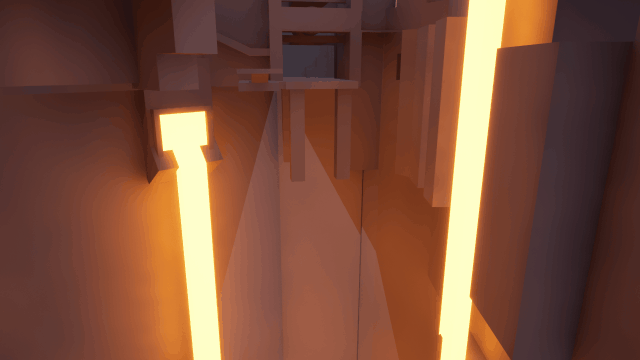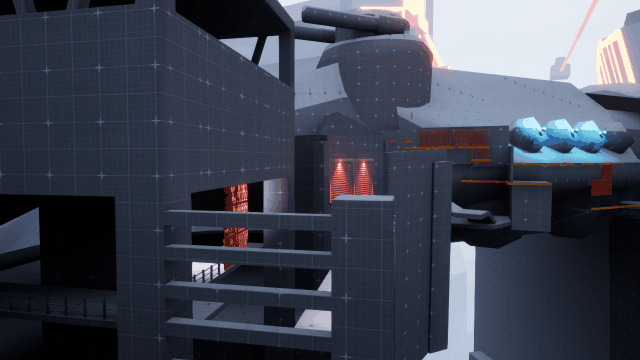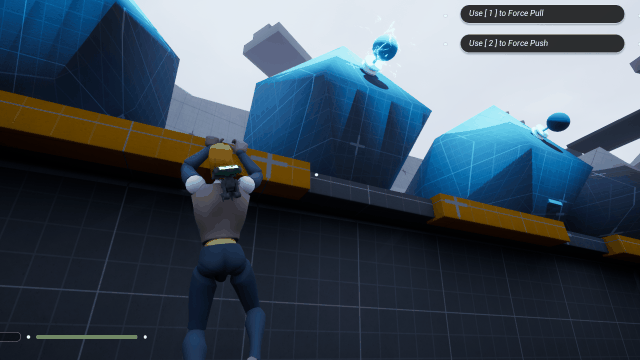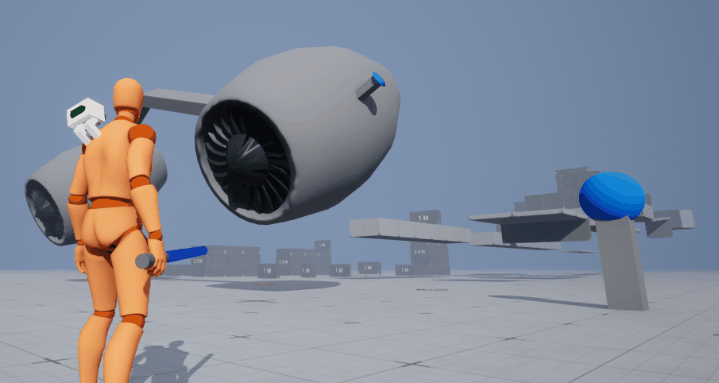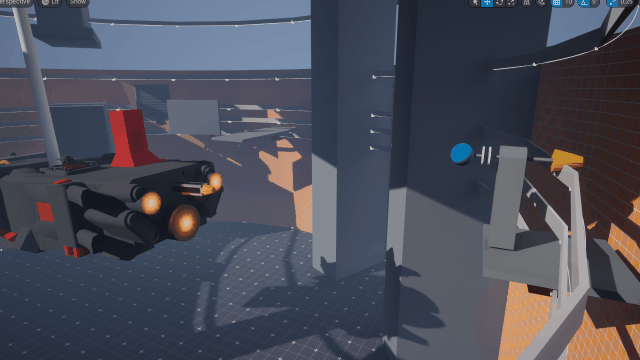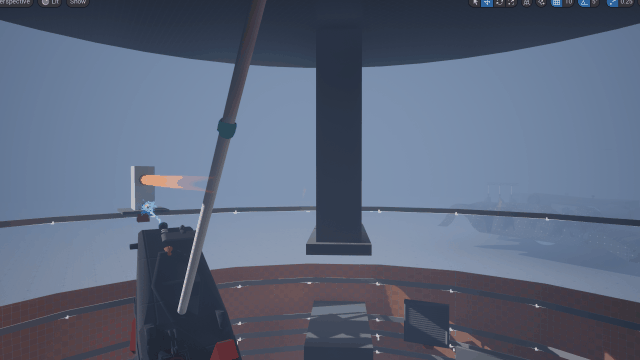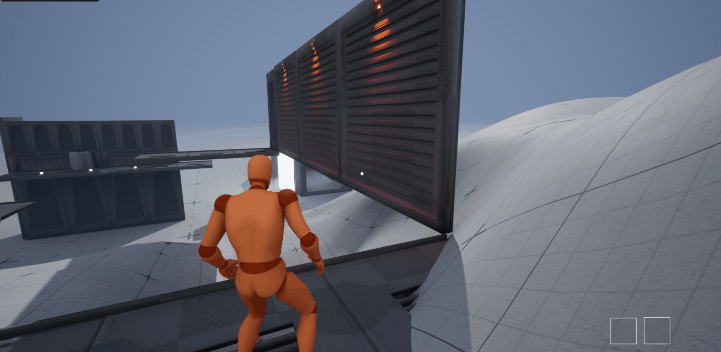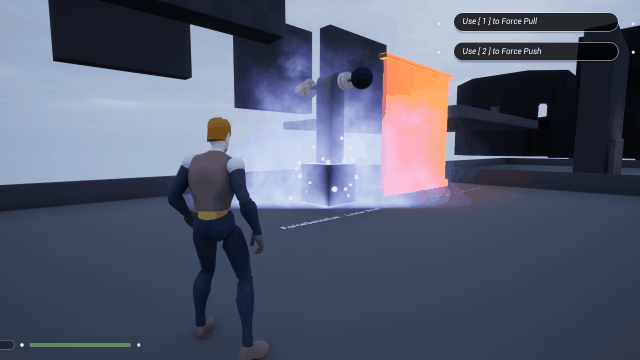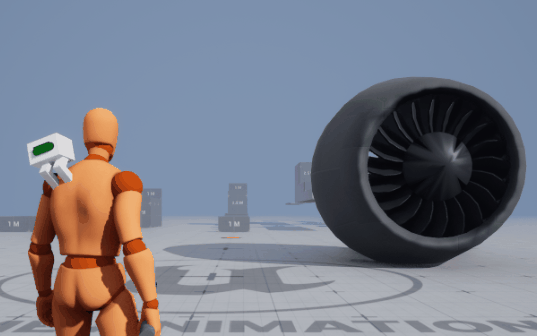Junk Planet Bracca
Third Person Action Adventure
Playable in Singleplayer
Created as practice
Developed over 2 Months
Unreal Engine
2 Person Team
25 minute runtime
This Level was made as part of an effort to improve my workflows and get more experience in the 3rd person adventure genre.
After a run in with the Empire, Cal Kestis crash lands in the middle of a Scrappers Guild owned Planet - Brabin. Cal wakes up, and realizes his ship came down in the middle of a ship breaking junkyard, similar to Bracca’s. With his innate knowledge of the type of landscape and the possible obstacles he’ll face, Cal trudges forward through the muck to find a way home.
Level Flow
(1) Wake up and leave the Crash Site
(4) Parkour through the abandoned rail lines
(7) Manipulate the locked rails to figure out how to stop the broken turbine
(2) Navigate the Tower and discover the Electrical Mechanics
(5) Maneuver between teetering ships and recover the access chip for BD-1
(8) Zipline to the ship carver site and learn the final puzzle’s mechanic
(3) Climb through the Small Ship Storage and see the dangers of Electricity
(6) Learn the relationships between electrical systems and ship parts
(9) Cut the ship down using nearby systems and ship parts
Dishes and their connected Devices are thrown into the pot, and all of a sudden players find that electricity isn’t the only thing that can open or close their path. Players will have to understand the timing and connections at play to proceed forward through spaces.
Production
I pitched a friend on the idea of doing a level together based on Star Wars Jedi: Fallen Order. I was inspired to do this due to noticing that my abilities in third person action games were not demonstrated on my portfolio at that moment.
I settled on Jedi: Fallen Order because of it’s branching-linear style levels, traditional mechanic teaching progression, and interesting setting possibilities. I also enjoyed the majority of the gameplay being rooted in mechanics and systems that are strongly represented by physical level ingredients.
I started by creating very visually minded materials to get buy in from the other designer on the project. I then spent a few days going front to back and vice versa thinking of concepts for mechanics that were unique, could be developed by a small team, and would fit right in with the Star Wars setting. I landed on the concept of electricity and its manipulation. This was something that fit with the gameplay, and had a lot of potential overlap with the player character’s abilities. I worked on a scenario that could utilize this mechanic as a final peak experience beat, documented it, and then took a step back to get the approval I needed from the other designer. I got it, and began the second stage of my pre-pro.
After the planning of the level’s core mechanic and peak experience, I created Action Blocks that would make for some interesting and memorable moments to the players. Each Action Block started with a particular function of the setting, and with circumstances that supported the form of the locations each Action Block took place in.
From there on, I acted as a very technically focused level designer. I scripted the basic gameplay needed to test if those Action Blocks were feasible and interesting to play through, and then came up with level blockouts that supported their gameplay. As the Action Blocks were built out, I tested their intuitiveness and ability to grab the player’s attention through gifs/videos. This allowed me to quickly determine if the particular Action Block was worthwhile or should be discarded.
Once I had a steady stable of Action Blocks, I worked my way front to back, figuring out how this experience could be introduced, developed, and altered in the players’ minds. With that in mind, I assembled the Action Blocks in an order that made sense in terms of pacing and intensity. I paired each Action Block with a particular gameplay moment that featured the level’s core mechanic. When this process was done, I had a level progression that made sense, left more answers than questions, and roused curiosity in those I presented it to. I divvied up the work the whole level would take with the other designer and began to work on my areas.
Each Area had a pretty similar workflow and approach:
Layout walking path according to the time it should take to complete (pacing)
Add in whatever relevant gameplay elements were prototyped previously (scripting)
Blockout the space for the right amount of information load (control lines of sight, alternate between smaller and larger spaces, reveal the space)
Add meshes based on the space’s function (platforms become catwalks, floating cubes become repulsorlifts, sightblockers become barrels)
Architect the geometry into more representative shapes (columns to create a figure/ground relationship, fences to block access but provide vision)
Bug fix the experience (additional scripting)
Introduce
Along the way, our player character runs into sparking electrical components, knowing their ability to arc lighting across distances, Cal uses these errant panels and cables as conduits to power various ship components that help open the path forward. Soon, Cal comes across challenges that change the way he looks at electricity, and he uses this knowledge + a little help from BD1 to find a way to get off world.
Players are introduced to the Electrical Systems by first seeing the Sparkers in the environment in a manner that shows that they exist and are safe.
Develop
Conduits are added to the mix, and show Players that Sparkers in combination with Conduits create arcs of electricity that must be avoided.
Twist
Test
All of the players’ knowledge of Electrical Systems is tested with the additional ability of being able to move Conduits around. Maintain the connections if you want to progress.
> Study for Star Wars Jedi: Fallen Order
Teaching the Core Mechanic: Electrical Systems
Over the course of four distinct sections of the level, I teach players the concept of the Electrical Systems they’ll be interacting with.
Electrical System Components:
Sparkers that give off Power
Conduits that receive and pass on Power
Dishes that receive Power and charge a connected Device
Traversal as Storytelling
Traversal paths are used in the level to create space
So that players have the time to digest what they were taught
To show off the cool locomotion mechanics available
Forcing the camera into a perspective that can show off certain POI
Ship Carvery
The final puzzle of the level is introduced by a small primer space that has a mini version of the puzzle space. This acts as a buffer, to give the player time to get acquainted with the idea that they’re at the end of the level, and also to put them into the puzzle solving headspace without overwhelming them with information.
The Carvery itself is a station where the Scrappers Guild ripped apart smaller, more specialized ships with delicate parts. I wanted players to see it as a bit of a rube goldberg machine- all of the parts needed are present and recognizable -the player just needs to manipulate them in a way that causes the chain of events to trigger and the ship freed. Once freed, it is implied that the player takes the ship and escapes, ending the level.
Gameplay
Electrical Conduit Platforms
Platforms sit on rails around the perimeter of the puzzle space. Force Pushing/Pulling them moves them around in the arena, allowing for different objects to be powered. With the right combination of pushes and pulls, players can align the Conduit with the Dish on the back of the ship, powering its thrusters.
Ship on a Pendulum
The Ship hangs on a pendulum that is fully controlled by tweens and math to create a constant back and forth + decaying swings. When thrust is applied, the Ship shoots up to its Apex, exposing the Conduit on the front of the ship to platforms on a higher level of the puzzle space.
Engine Platform
As taught earlier in the level, when Engines and their associated Dish are powered, their jets shoot out and burn whatever is nearby. Players leverage this knowledge to send the ship flying into the Engine, which causes it to jet out and burn the connector on the ship’s cable- releasing the ship.

